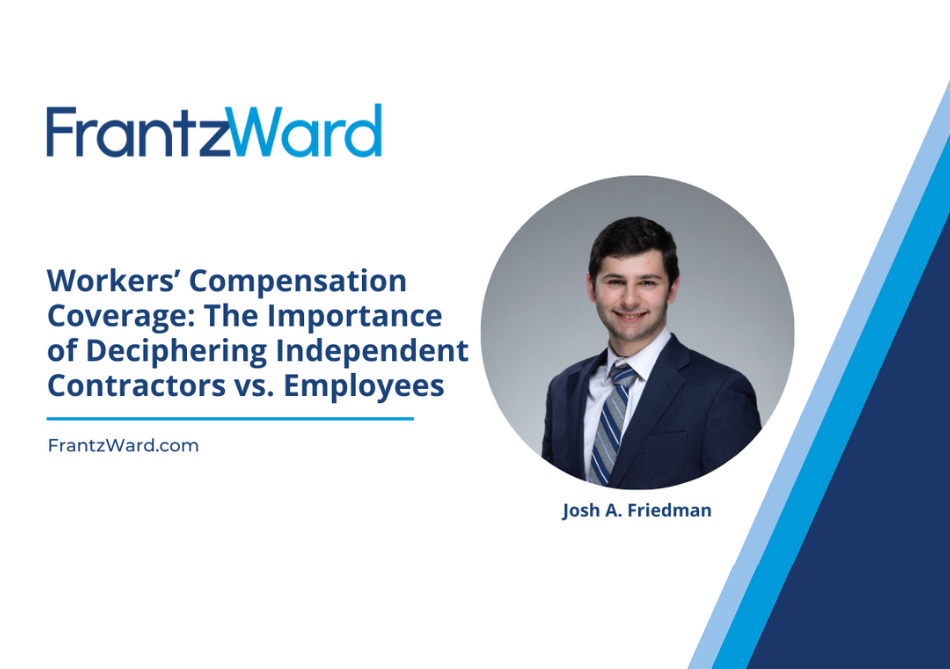Workers’ Compensation Coverage: The Importance of Deciphering Independent Contractors vs. Employees
Ohio workers’ compensation is formulated to protect employees. With so many varying forms of employment, including the rise of the “gig” economy and flexible work arrangements, deciphering whether a worker is an employee or an independent contractor has become increasingly important.
Employers are now faced with questions such as “What’s happens if an independent contractor hired by an employer gets injured on the job?” and “Are they entitled to workers’ compensation coverage?” To use a legal term, “It depends.”
What dictates an independent contractor vs. an employee?
Independent contractors are generally not considered “employees” as used in Ohio Revised Code § 4123.01, thus, an independent contractor who is injured on the job is not covered by the workers’ compensation policy of the hiring party. While this seems straight-forward, there are scenarios where workers who may be deemed independent contractors are still covered.
An injured worker may allege that they are misclassified by the employer as an independent contractor, and that they should actually be classified as an employee and thus covered by workers’ compensation. So, what are the factors that dictate an independent contractor vs. an employee?
The Ohio Supreme Court in Gillum v. Indus. Comm., promulgated a test known as the “right to control” test:
Whether one is an independent contractor or in service depends upon the facts of each case. The principal test applied to determine the character of the arrangement is that if the employer reserves the right to control the manner or means of doing the work, the relation created is that of master and servant, while if the manner or means of doing the work or job is left to one who is responsible to the employer only for the result, an independent contractor relationship is thereby created.
The Court noted that this is adjudicated on a case-by-case basis. There is no one dispositive factor. The Court in State ex rel. Ugicom Enters. v. Morrison, laid out a list of non-exhaustive factors that are to be considered, including, but not limited to:
- Existence of a contract dictating performance and price,
- Nature of the business,
- Degree of supervision of the work,
- Which party furnishes tools, supplies, and materials,
- Right to control the progress of the test,
- Time for which the working party is controlled,
- Method of payment,
- Any pertinent agreements or contract
With the ambiguity of role distinction decisions, who gets the final say?
It is important to note that workers’ compensation matters are very fact specific. Even if there is a contract in place that designates an injured worker as an independent contractor, an administrative hearing officer or court may still deem that injured worker as an employee, and subject to workers’ compensation coverage, if enough factors weigh in favor of an employer/employee relationship.
It is important to consider all of these factors and clearly define the employment relationship, in a written agreement, and act in accordance with these factors. For additional information, please contact Josh A. Friedman or Maris J. McNamara.


